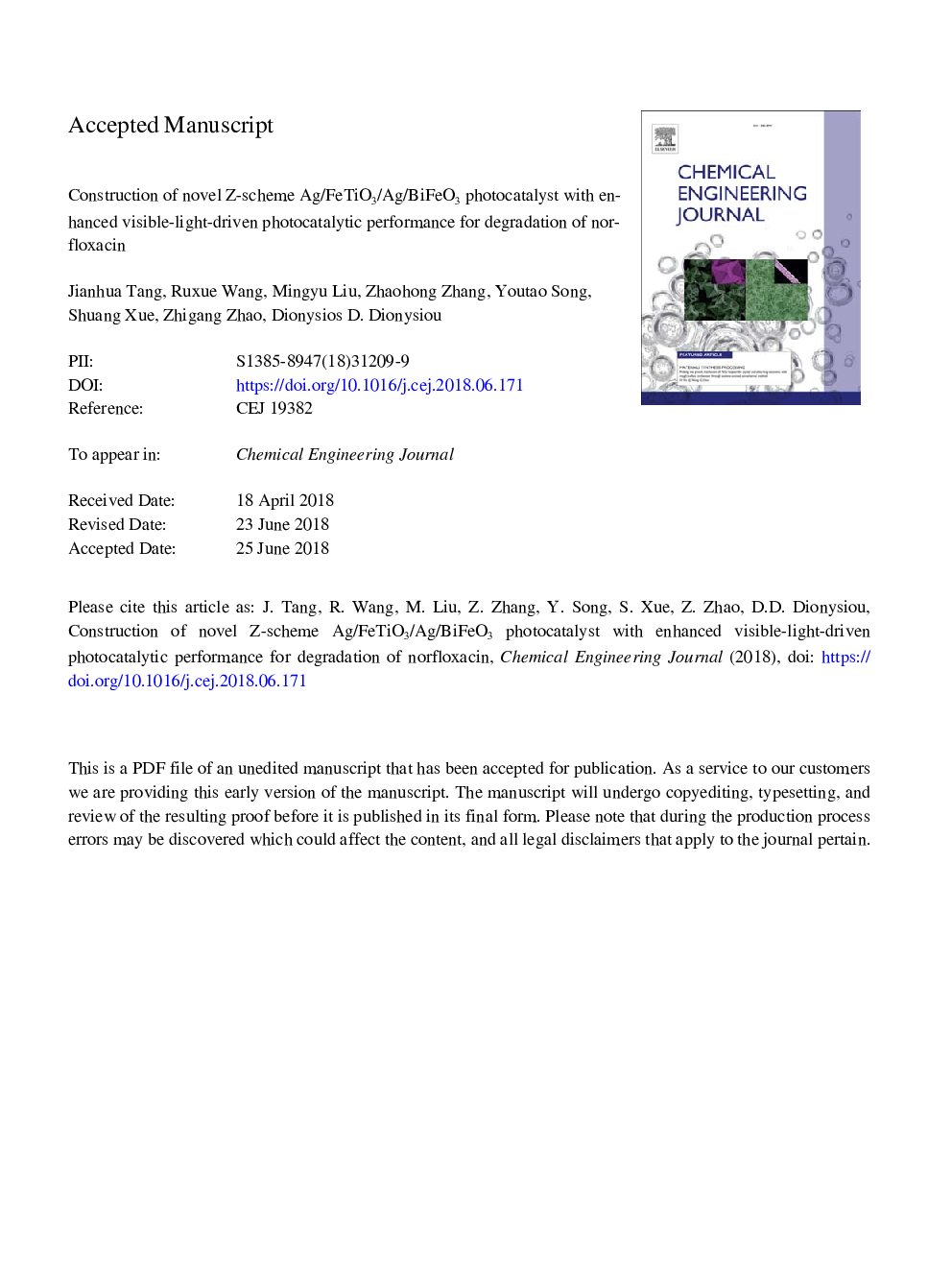| Article ID | Journal | Published Year | Pages | File Type |
|---|---|---|---|---|
| 6578394 | Chemical Engineering Journal | 2018 | 32 Pages |
Abstract
A novel Z-scheme Ag/FeTiO3/Ag/BiFeO3 with excellent visible-light-driven photocatalytic performance was constructed using sol-gel method followed by a photo-reduction process, and applied in the photocatalytic degradation of norfloxacin (NFX) in solution under visible light irradiation. The photocatalytic activities of Ag/FeTiO3/Ag/BiFeO3 and FeTiO3/BiFeO3 nanocomposites were compared. The effects of wt.% content of Ag, the mass ratio (FeTiO3:BiFeO3), and light irradiation time on the photocatalytic activities were assessed. The mechanism on Z-scheme Ag/FeTiO3/Ag/BiFeO3 photocatalytic degradation was also proposed. The results show that Ag/FeTiO3/Ag/BiFeO3 has higher photocatalytic activity than FeTiO3/BiFeO3, and the loading of Ag improves the photocatalytic activity of catalysts. The photocatalytic degradation extent reaches 96.5% within 150â¯min, when using Ag/FeTiO3/Ag/BiFeO3 at 2.0â¯wt% Ag (FeTiO3:BiFeO3â¯=â¯1.0:0.5). In addition, Ag/FeTiO3/Ag/BiFeO3 can be reused with excellent photocatalytic stability. The study reveals that the active species such as hydroxyl radicals (OH), holes (h+) and superoxide radicals (O2â) are generated during the photocatalytic process using Ag/FeTiO3/Ag/BiFeO3. These results on the enhanced photocatalytic activity are attributed to the synergistic photocatalytic effects of FeTiO3 and BiFeO3 with narrow band gaps mediated by Ag. Hence, the Z-scheme Ag/FeTiO3/Ag/BiFeO3 photocatalytic system demonstrates great promise in treating antibiotics in water and wastewater using solar energy.
Related Topics
Physical Sciences and Engineering
Chemical Engineering
Chemical Engineering (General)
Authors
Jianhua Tang, Ruxue Wang, Mingyu Liu, Zhaohong Zhang, Youtao Song, Shuang Xue, Zhigang Zhao, Dionysios D. Dionysiou,
